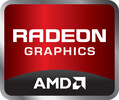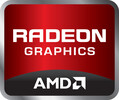AMD Radeon R9 M380 vs AMD Radeon R9 M365X
AMD Radeon R9 M380
► remove from comparison
The AMD Radeon R9 M380 is a dedicated mid-range graphics card for laptops. It is based on a 28nm GCN core with 12 compute units and a GDDR5 memory controller. Despite the similar name, the Radeon R7 M380 is a much slower as it features only 10 compute units and DDR3 memory.
Features
Features of the R9-M380 include video decoding for MPEG-4 AVC/H.264, VC-1, MPEG-2, and Flash directly by the AMD GPU. Multi-View Codec (MVC) and MPEG-4 part 2 (DivX, xVid) HD videos are compatible as well.
The R9 series also supports automatic graphics switching between the integrated GPU and discrete GPU. Called Enduro, the technology supersedes AMD's Dynamic Switchable Graphics and is similar to Nvidia's Optimus. Furthermore, the M380 can directly support multiple monitors using Eyefinity Technology if Enduro is disabled.
Other features include ZeroCore to reduce the power consumption when the display is turned off and Power Gating to power down areas of the chip that are not used.
The integrated HD audio processor is able to transmit HD Audio (TrueHD or DTS Master Audio) over HDMI and DisplayPort (e.g., for Blu-Ray videos). Additionally, it allows audio output simultaneously and in parallel to multiple devices with the new Discrete Digital Multipoint Audio (DDMA) feature.
AMD Radeon R9 M365X
► remove from comparison
The AMD Radeon R9 M365X is a mid range DirectX 12 compatible graphics card for laptops. It is based on the GCN architecture and manufactured in 28nm. The older Radeon R9 M270 and the current Radeon R9 M370X are very similar (see for gaming benchmarks).
The R9 M365X uses 640 shader cores (10 compute units) clocked at 925 MHz (max.) and supports according to the AMD website 4 GB GDDR5 at 1125 MHz (4 GHz effective). The only used version in a Toshiba laptop so far however only uses 2 GB GDDR5.
| AMD Radeon R9 M380 | AMD Radeon R9 M365X | |||||||||||||||||||||||||||||||||||||||||||||||||||||||||||||
| Radeon R9 M300 Series |
|
| ||||||||||||||||||||||||||||||||||||||||||||||||||||||||||||
| Codename | Strato Pro GDDR5 | |||||||||||||||||||||||||||||||||||||||||||||||||||||||||||||
| Architecture | GCN | GCN | ||||||||||||||||||||||||||||||||||||||||||||||||||||||||||||
| Pipelines | 768 - unified | 640 - unified | ||||||||||||||||||||||||||||||||||||||||||||||||||||||||||||
| Core Speed | 1000 MHz | 900 - 925 (Boost) MHz | ||||||||||||||||||||||||||||||||||||||||||||||||||||||||||||
| Memory Speed | 6000 MHz | 4500 MHz | ||||||||||||||||||||||||||||||||||||||||||||||||||||||||||||
| Memory Bus Width | 128 Bit | 128 Bit | ||||||||||||||||||||||||||||||||||||||||||||||||||||||||||||
| Memory Type | GDDR5 | GDDR5 | ||||||||||||||||||||||||||||||||||||||||||||||||||||||||||||
| Max. Amount of Memory | 4 GB | 4 GB | ||||||||||||||||||||||||||||||||||||||||||||||||||||||||||||
| Shared Memory | no | no | ||||||||||||||||||||||||||||||||||||||||||||||||||||||||||||
| API | DirectX 11.1, Shader 5.0, OpenGL 4.3 | DirectX 12, Shader 5.0, OpenGL 4.4 | ||||||||||||||||||||||||||||||||||||||||||||||||||||||||||||
| Transistors | 1.5 Billion | |||||||||||||||||||||||||||||||||||||||||||||||||||||||||||||
| technology | 28 nm | 28 nm | ||||||||||||||||||||||||||||||||||||||||||||||||||||||||||||
| Features | DirectCompute 5.0, OpenCL | Mantle, PCIe 3.0, Zero Core, PowerTune | ||||||||||||||||||||||||||||||||||||||||||||||||||||||||||||
| Notebook Size | medium sized | medium sized | ||||||||||||||||||||||||||||||||||||||||||||||||||||||||||||
| Date of Announcement | 16.06.2015 | 06.05.2015 |
Benchmarks
* Smaller numbers mean a higher performance
1 This benchmark is not used for the average calculation
For more games that might be playable and a list of all games and graphics cards visit our Gaming List











